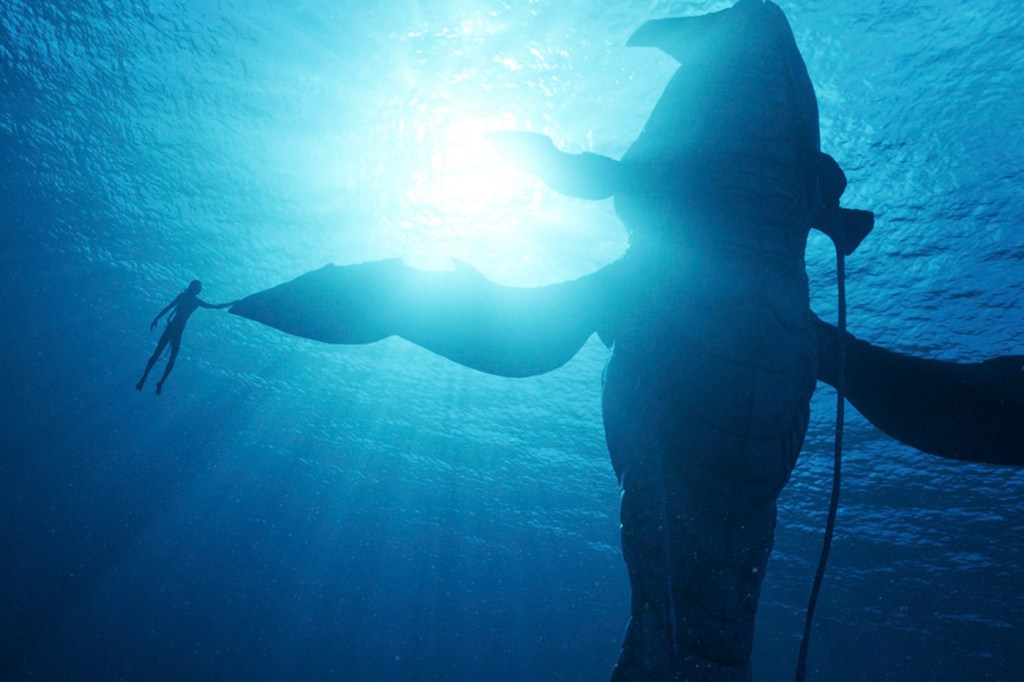Respected marine scientist reacts to ‘Avatar: The Way of Water’

“Avatar: The Way of Water” is here, and it’s already making a splash.
A sequel to the most successful movie ever made, James Cameron’s blockbuster return to the planet of Pandora arrives 13 years after the original “Avatar.” Whether it reaches the financial highs of its predecessor–it reportedly needs to be the third or fourth highest grossing film in history just to break even–is still unclear, but one thing that’s crystal clear is how invested Cameron is in the film’s depths–literally.
This time around, audiences get a glimpse of Pandora’s oceans, which receive the amount of attention you’d expect from a man who has broken deep sea diving records. A man so obsessed with oceanic verisimilitude he had actors perform scenes in massive underwater tanks, which required teaching actors like Kate Winslet how to breathe underwater for up to seven minutes.
But did all that work pay off? How realistic is Cameron’s depiction of an alien ocean? And does that even matter?
Brian Helmuth, a professor of marine and environmental sciences at Northeastern University, says it looks like Cameron pulled it off.
“Cameron has spent a lot of time in the ocean, so I think he and his people have a really good sense of what the biological reality is,” Helmuth, a long-time “Avatar” fan, says.

The first thing any film set in the ocean needs to nail is, of course, water. It’s something that every person on the planet has experience with, which means audiences are naturally trained to pick out inconsistencies in aquatic visual effects. People might not be consciously aware of a concept like Reynolds number, which helps predict fluid dynamics and fluid flow simulations. But Helmuth says they are good at picking out when older films use scale models that make fluid physics behave differently.
Helmuth says films have gotten much better at doing this in recent years. The technology and awareness of physics that directors and VFX teams use have come a long way since the days of scale models in a bathtub. At the same time, he admits some suspension of disbelief is necessary for a film that takes place on an alien planet and that stars 9-foot tall blue humanoids.
“I think [it’s] probably why filmmakers like Cameron have gotten really good at the physics because it makes it so much more believable, because it doesn’t jar your brain that something is just wrong with what you’re looking at,” Helmuth says.
Diving into the oceans of Pandora, Cameron introduces an entirely new ecosystem, complete with its own array of creatures. Helmuth says it’s clear that Cameron and his team took a close look at real-world animal behaviors when designing many of the creatures in “The Way of Water.”
Skimwings, for example, jettison across the ocean surface like flying fish. Like everything on Pandora, they’re also massive enough for the indigenous Na’vi to ride on them, but Helmuth says there’s enough reality in Cameron’s fantasy to keep the audience grounded.
“If a creature is behaving a little bit like a flying fish in my brain, I can go back to the flying fish I’ve seen in nature, and it makes it more believable,” he says. “I like the touch points that have some biological reality but then extend it to really show the imagination of the creator in new ways.”
It also helps that “there’s almost no place on the planet that’s weirder than the deep sea,” he adds.
“What’s really interesting is you look at some, for example, horror movies and to an uninitiated audience, it looks totally alien,” he says. “But to a marine biologist, it looks a lot like, in some cases, a little teeny, tiny creature that you find in the sand.”
One of the film’s most inventive creations are tulkuns, which are essentially large, sentient alien whales that are capable of communicating with the Na’vi using whale-like sounds. It’s a major part of “The Way of Water,” but is that kind of humanoid-non humanoid communication possible? After all, scientists are already working to try to decode Earth whale sounds.
“It’s a great question because, inherently, I think what we try to do when we define communication is put it in human terms,” Helmuth says.
Although Helmuth says trying to create a one-to-one link between human and nonhuman language is almost like “putting blinders on us because it ignores the multiple intelligences or ways of communicating with one another.”
“The Way of Water” is “almost a relief” for Helmuth, a long time “Avatar” who still uses the first film in his classes. He hopes that showing audiences a more realistic version of the ocean, even if it is alien, will benefit the marine sciences and the general public. Ninety-five percent of life on Earth is in the planet’s oceans, but people are largely unaware of it, even if they’re fascinated by what lies below the waves. The kind of collaboration between filmmakers and biologists that produces “The Way of Water” could be a model for getting people invested in their planet and its oceans.
“How do we capitalize on that almost yearning to connect with the ocean, to re-engage the public and help [people] understand the importance of real life and what the ocean does for people?” Helmuth says. “I think that’s huge, and I think that’s what some of these films are really good at doing.”
For media inquiries, please contact media@northeastern.edu.





